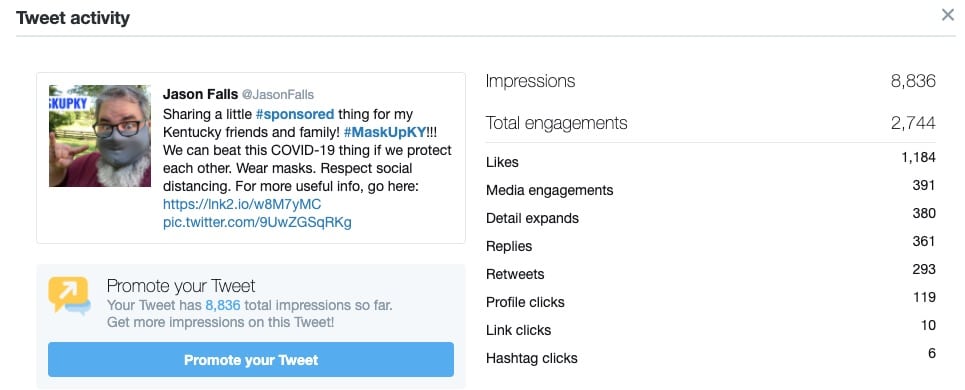As we survey the web for the best influencers for our influencer marketing campaigns, our tendency has always been to prioritize influencers by their follower count. If you haven’t heard it yet, let me say this loud and clear: Influencer follower count doesn’t matter.
Now, let’s break down why you’ve been told it doesn’t matter, discuss ways it actually does and then course correct our thinking so we truly know why we shouldn’t care about follower counts at all.

What We’ve Been Told
Most people advocating for the position that follower counts don’t matter make the argument that micro and nano influencers have less sponsored content, deeper engagement and higher levels of trust. In general, this is accurate. It’s a reasonable excuse to dismiss focus on someone with 100,000 followers over someone with 20,000 followers. That smaller influencer (in audience size) is likely to have higher engagement rates. Some will get a higher number of their followers to interact with content about you than the larger influencer based on that math alone.
(To be more clear about this assertion, someone with 100,000 followers and an engagement rate of 0.5% will produce engagement with 500 people. Someone with 20,000 followers and a 3% engagement rate will produce engagement with 600 people. Do the math on engagement rates to have a more reasonable prediction of how many people will interact with their content.)
The counter argument is that someone with more followers produces more reach. But that statement is actually incorrect. Someone with 100,000 followers has more potential reach. Actual predictable reach is the followers times engagement rate, like above.
“You’re paying for potential reach when you go up to the next tier (of inlfuencer),” Crystal Duncan of Edelman told me on Winfluence – The Influence Marketing Podcast recently.
But Numbers Matter
The tendency to want influencers with larger follower counts is basic and logical. The more potential reach, the more people might see my content. But, as the engagement rate math proves, that argument is null and void.
There is one area where the follower count number consistently matters, though: How much you’re going to have to pay to access that particular influencer’s audience. So, if you want to pay more for less actual reach, keep caring about the follower counts.
Course Correction
But the instinct to want more reach or impressions is rooted in smart thinking. We want more people to see the content, to engage with it and to potentially change their thinking or behavior with regard to our brand. More is better. It’s the potential versus actual hidden in the analytics that has confused us.
However, we can still use the smaller follower count influencers and get more reach with paid support.
“If our goal is to get some really awesome assets, why don’t we take that incremental money you’re going spend on the next tier of influencer, spend it on the micro influencer and put paid media behind that?” Duncan explained “Because then we’re talking actual impressions versus potential reach.”
Take a look at the analytics from this post of mine from Twitter:

My average Tweet probably gets between 1,000 and 2,000 impressions and a couple dozen engagements. While I do have a fairly nice sized Twitter following (from years of engaging on the platform) it’s not a great network for engagement for me anymore because it’s evolved to more of a news ticker for many people.
But 2,744 engagements? That’s a metric I’d expect to see in impressions. And while the political polarization of the topic of masking for COVID protection drove a lot of those 361 replies and retweets, the metrics on this post are far more impactful than an organic only Tweet for me, or for that matter people with 5-10 times the follower count.
What Really Matters
So, the math behind all this is that you can get the impressions and reach — actual impressions and reach — with paid media spend behind content from anyone, not just those with big follower counts. What does that mean? It means your priority should be the quality of content.
Find micro and nano influencers who create great content, can engage their audience, perhaps be able to handle engaging a sudden influx of new audience members from your paid promotion of their content, and amplify what they do with the money you’ll save on someone with more followers. If you do this, you’ll bank on real impressions, real reach and real potential customers, not on a big number with a lot of potential.
Photo by Gil Ribeiro on Unsplash

